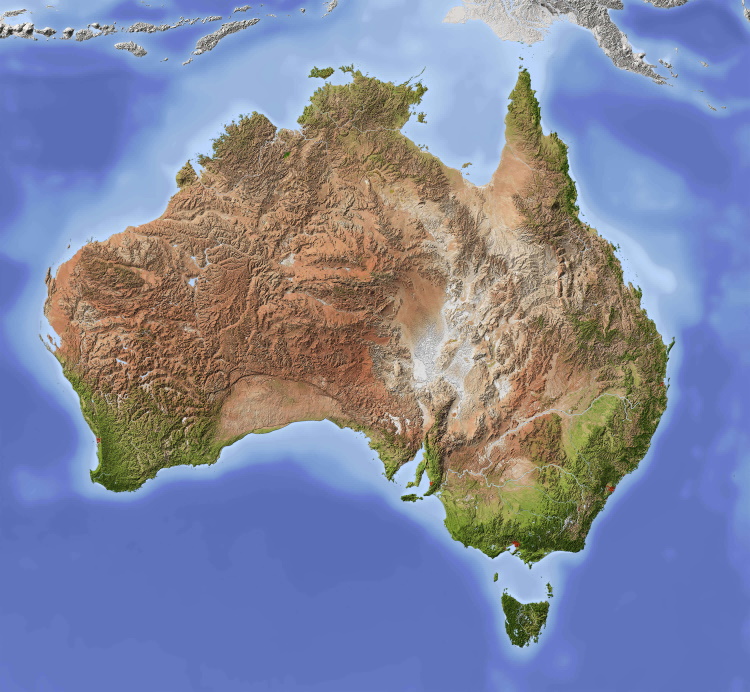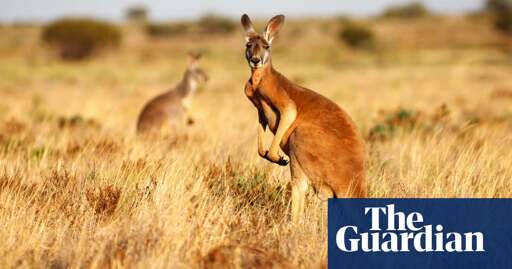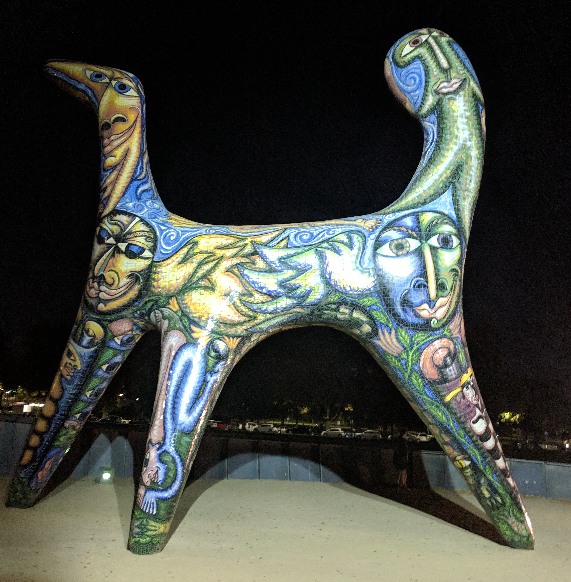Fuck US lawmakers. Like they’ve got a leg to stand on when talking about things being “needlessly cruel”.
So basically wolves/deer in the US and dingos/roos in AUS, same same? Only difference is too few guns for hunting permits so the government has to do it? Ok then.
As the US descends into fascist hellscape this is what members of the Democrats are concerned about? I would trust our commercial kangaroo harvesters to humanely shoot kangaroos far more than the cowboys out there hunting deer and other game in the US.
The cowboys are now hunting children in classrooms and courtrooms.
Ah, the most dangerous game of all.
There are a lot of differences between how the US and how Australia do hunting. For one, there is no commercial deer/elk harvest in the US. Commercially sold venison can only be from farmed deer/elk. I think deer leather can be sold, but there are a lot of hoops to go through.
Also, in the US, most hunting regulations exist not for ethical or conservation purposes but to prevent people from being able to subsistence hunt. They wanted hunting to be a rich man’s game like in the UK. The existence of hunting seasons is a good example. Another is regulations on method of take; for example, you often must use outdated equipment like bows and muzzleloaders, and the use of modern, effective rifles is severely curtailed. Compare that to Australia where you can use night vision/thermal scopes and rifles with supressors, and i believe there is no “hunting season”.
The reality is that both countries have an overpopulation of large herbivores in areas, and the answer anti-hunting people give is the reintroduction of large carnivores. While we should do that in more rural areas, it’s not feasible in urban/suburban areas where deer proliferate.
Many municipalities actually have to pay to have deer culled, and they do that rather than making it easier for people to hunt.
Tl;dr, i think there are some things I like better about how Australia handles hunting, but theres also things about the US’s method i like.
Where do they limit hunting to only bow or black powder?
I know states in the Midwest have special seasons/times for bow/black powder hunting but the regular deer season isn’t limited that way.
Here’s an example: Delaware only allows shotgun, pistol/pistol caliber long guns, and muzzleloader, no true rifle.
https://www.eregulations.com/delaware/hunting/deer-seasons
Connecticut only allows rifle on private land.
https://portal.ct.gov/deep/hunting/2025-connecticut-hunting-and-trapping-guide/deer-hunting#PVSHOT
Iowa has no rifle allowed.
https://www.iowadnr.gov/things-do/hunting-trapping/iowa-hunting-seasons
Lots of states have restrictions against modern (and by modern, i mean bottlenecked) rifle rounds, and if you want to use a rifle, you have to either find a 150 year old cowboy gun, or buy a really expensive new gun using one of several specialized cartridges that cost like $2 a round.
And then when it comes down to it, if you live in a state where it is legal to hunt with a regular rifle, you end up finding that half the time any public land that you can hunt on is restricted to archery only, so unless you happen to be a large landowner, you can’t hunt with a rifle.
Florida’s one example.
Fuck that, I love kangaroo and it’s one of the few meats my cat will eat. They are a pest basically if I understand correctly.
US lawmakers think stripping people of their humanity is acceptable. Fuck them and their useless opinions.
oh yeah nah course we care about *checks notes* US lawmakers and their thoughts. utmost respect for em.
There is an interesting, complex conversation going on between the many different Australian advocacy groups here in the article, it’s clearly got a few interesting angles to it. But if one thing is clear, the US lawmakers are not only ignorant of the discussion but incidentally hypocritical (see the Game Industry Council comment on US deer practices). They seem to mean well, in a surprising way, but that’s no excuse for professional lawmakers to be so blatantly ignorant. Although, to be honest, I’d be surprised if any conservationist legislation went through their congress under this regime, so I doubt it will pass.
funny article highlighting foreigners lack of understanding with a good sprinkle of anti intellectualism
I’m not sure what’s more amusing out of the American hypocrisy or all these football boot manufacturers pretending they are ethical for returning to cow leather.
Governments have backed controls and culls of the kangaroo’s natural predator – the dingo
“The natural alternatives are being killed by a dingo or dying by starvation,” he says.
Farmers livestock might be at risk but can we not reintroduce more dingos to manage the population?
Kangaroo populations will naturally go through “boom and bust” cycles as the amount of available feed and water varies tremendously. (Aussies often forget that this is the world’s driest continent.)
Mass deaths within local kangaroo populations will always occur due to drought. That’s nature, and it’s a bad way to die
Having ‘extra’ dingos manage the ‘roo population’ would mean they’d suffer a similar fate, just delayed by a few months, if that.
When the 'roo population fell to low numbers, the dingos would turn on whatever is available… including, as you say, livestock.
It’s a complex problem, and there are no easy answers.
However, which is worse? Letting 'roos die horrible mass deaths from inevitable droughts, or controlling their numbers via managed culls, and then tapping into that resource? Most, but not all, kangaroos that are culled will die an instant death.
In fact, for those of us who eat meat, we should avoid beef, lamb, and pork. Kangaroo is FAR more sustainable from an environmental perspective…
… even if Skippy is on our National Coat of Arms.I’m not convinced that increasing dingo numbers wouldn’t at least help control the population. Basically all predator-prey systems go though cycles afaik (we teach this model to first year maths students). Obviously I’d have to read more to form a stronger opinion though.
In fact, for those of us who eat meat, we should avoid beef, lamb, and pork. Kangaroo is FAR more sustainable from an environmental perspective…
… even if Skippy is on our National Coat of Arms.This I agree with, I live overseas now and I miss a good roo-steak.
Oh, increasing the dingo population (by any method) would, as you say, definitely impact the roo population. No question!
But the *location* of that roo population matters and affects whether any cull makes economic sense.
I was a spotter and offsider for a few pro roo shooters over a few seasons.
Culling roos usually only makes sense when it benefits the farmer AND value can be extracted from the roos.
Most culls I’ve seen were in cattle country that was still ‘close to town’, usually within 1-2 hrs’ drive. (I’m sure that culls also occur down in sheep country, too.)
Primary producers rarely look upon dingos favourably, and there’d be little support for increasing them.
The ‘predator-prey’ ‘boom/bust’ cycles are still common, but generally where the station’s size is measured in 1000’s of sq. kms. In the ‘back of beyond’, diesel alone costs much more than can be made from any culled roos.
Edit: check out the dingo fence…
https://en.m.wikipedia.org/wiki/Dingo/_Fence









